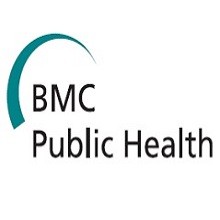
اثر بازدارندگی عصاره Allium sativum و Zingiber officinale بر باکتری های بیماری زا
چکیده
سابقه: گیاهان و ادویه جات به عنوان عامل درمانی در برابر بسیاری از عفونت های بیماری زا، بسیار مهم و مفید هستند. افزایش مقاومت عوامل بیماری زا به چند دارو باعث شده که تلاش برای یافتن ترکیبات جایگزین برای درمان بیماری های عفونی صورت گیرد.
مواد و روش ها: در مطالعه حاضر، توان ضد میکروبی سیر و زنجبیل در برابر هشت جدایه بالینی باکتریایی محلی مورد بررسی قرار گرفته است. سه نوع عصاره از سیر و زنجبیل شامل عصاره آبی، عصاره متانولی و عصاره اتانولی به طور جداگانه در برابر Escherichia coli, Pseudomonas aeruginosa, Bacillus subtilis, Staphylococcus aureus, Klebsiella pneumoniae, Shigella sonnei, Staphylococcus epidermidis and Salmonella typhi مقاوم به دارو بررسی شد. فعالیت ضد باکتریایی از طریق روش انتشار در آگار تعیین شد.
نتایج: تمام باکتری های بررسی شده به عصاره آبی سیر حساس تر بودند ولی حساسیت آن ها به عصاره زنجبیل آبی کم بود. MIC (حداقل غلظت مهارکنندگی ) گونه های مختلف باکتری از 05/0 تا 1 میلی گرم/میلی لیتر متفاوت بود.
نتیجه گیری: با توجه به چندین عامل اجتماعی و اقتصادی پاکستان یعنی به طور عمده فقر و شرایط بد بهداشتی، پژوهش حاضر، استفاده از ادویه جات به عنوان داروی جایگزین یا مکمل را برای کاهش هزینه بالا، عوارض جانبی و افزایش تدریجی مقاومت عوامل بیماری زا به داروها تشویق می کند.
مقدمه
بیماری های میکروبی و سایر بیماری های عفونی از سال ها پیش، با استفاده از داروهای ضد میکروبی تجاری در دسترس کنترل شده است. استفاده ی چشمگیر از آنتی بیوتیک ها باعث گسترش مقاومت چند دارویی ( MDR) در بسیاری از باکتری های بیماری زا شده است. مقاومت رو به افزایش نسبت به داروها، مانع اصلی درمان موفق بیماری های عفونی و کنترل بیماری های میکروبی است (1)، به طور مشابه، مواد نگهدارنده مانند سولفیت، نیترات، نیتریت و آنتی بیوتیک ها برای سلامت انسان مضر بوده و عوارض جانبی زیادی از جمله سردرد، تهوع، ضعف، عقب ماندگی ذهنی، تشنج، سرطان و بی اشتهایی دارند [2]. گسترش مقاومت دارویی در عوامل بیماری زا و افزایش علاقه مصرف کنندگان به مواد غذایی سالم، کشف عوامل ضدمیکروبی جدید را تحریک کرده است (3).
Abstract
Background: Herbs and spices are very important and useful as therapeutic agent against many pathological infections. Increasing multidrug resistance of pathogens forces to find alternative compounds for treatment of infectious diseases. Methods: In the present study the antimicrobial potency of garlic and ginger has been investigated against eight local clinical bacterial isolates. Three types of extracts of each garlic and ginger including aqueous extract, methanol extract and ethanol extract had been assayed separately against drug resistant Escherichia coli, Pseudomonas aeruginosa, Bacillus subtilis, Staphylococcus aureus, Klebsiella pneumoniae, Shigella sonnei, Staphylococcus epidermidis and Salmonella typhi. The antibacterial activity was determined by disc diffusion method. Results: All tested bacterial strains were most susceptible to the garlic aqueous extract and showed poor susceptibility to the ginger aqueous extract. The (minimum inhibitory concentration) MIC of different bacterial species varied from 0.05 mg/ml to 1.0 mg/ml. Conclusion: In the light of several socioeconomic factors of Pakistan mainly poverty and poor hygienic condition, present study encourages the use of spices as alternative or supplementary medicine to reduce the burden of high cost, side effects and progressively increasing drug resistance of pathogens.
Introduction
Microbial pathogenecity and other infectious diseases have been controlled by use of commercially available antimicrobial drugs since last many years. Tremendous use of antibiotics has developed multiple drug resistance (MDR) in many bacterial pathogens. The increasing drug resistance is the main hindrance in successful treatment of infectious diseases and to the control of microbial pathogenecity [1]. Similarly, preservatives like sulfites, nitrates, nitrites and antibiotics, are harmful for human health and have many side effects including headache, nausea, weakness, mental retardation, seizures, cancer and anorexia [2]. Development of drug resistance in pathogens and increasing interest of consumers for safe food forces to explore new antimicrobial agents [3].
چکیده
مقدمه
مواد و روش ها
جمع آوری نمونه
استرین های باکتریایی
تهیه عصاره ها
آماده سازی محیط کشت
آزمایش ضد میکروبی با استفاده از روش انتشار دیسک
تعیین حداقل غلظت بازدارندگی (MIC)
تحلیل آماری
نتایج و بحث
Abstract
Introduction
Materials and methods
Sample collection
Bacterial strains
Preparation of extracts
Culture preparation
Antimicrobial assay using Disc diffusion method
Determination of minimum inhibitory concentration (MIC)
Statistical analysis
Results and Discussion
- ترجمه فارسی مقاله با فرمت ورد (word) با قابلیت ویرایش، بدون آرم سایت ای ترجمه
- ترجمه فارسی مقاله با فرمت pdf، بدون آرم سایت ای ترجمه
